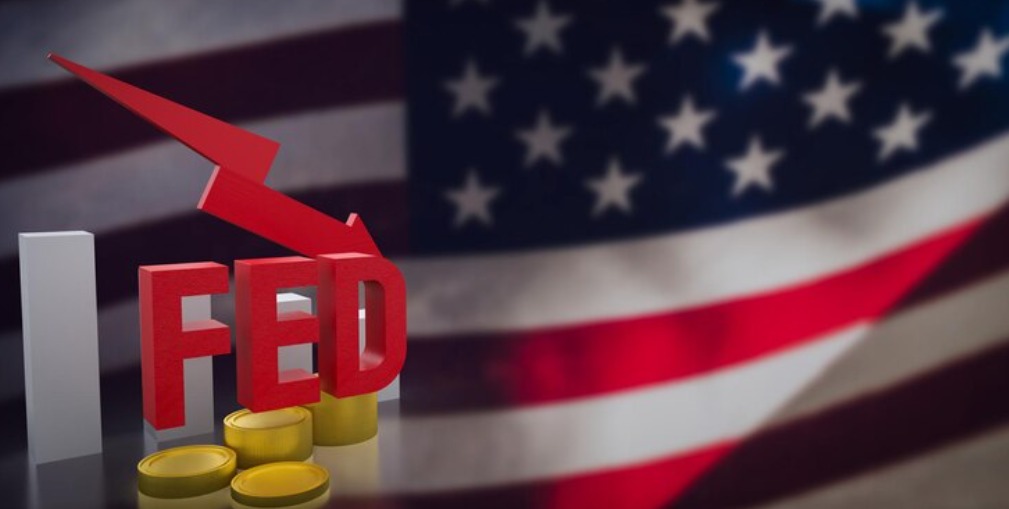Table of Contents
The Big Move
The U.S. Federal Reserve has delivered a quarter-point rate cut, bringing its benchmark interest rate down to 3.75%–4%.
It sounds like a relief — cheaper loans, easier credit, happier markets.
But hold on — Fed Chair Jerome Powell just hinted this could be the final rate cut of 2025.
That’s like giving the economy a small caffeine shot… and then hiding the coffee pot.
Why the Cut — and Why the Confusion
The U.S. economy isn’t in crisis, but it’s definitely losing some steam.
Inflation has eased but not fully cooled, job growth has slowed, and consumer spending is showing signs of fatigue.
So, the Fed decided to ease rates slightly — just enough to keep growth from slipping further.
It’s the classic middle path: not a panic move, not a bold one either.
But here’s the twist — the Fed made this decision without its usual economic data.
A partial U.S. government shutdown meant no fresh reports on jobs or inflation, forcing policymakers to act partly on instinct.
Powell admitted they’re “navigating in the fog” — making critical calls without a clear view ahead.
Inside the Fed: A Family Argument
This wasn’t a cheerful consensus moment. Even within the Federal Reserve, there were sharp divisions.
Some policymakers pushed for a deeper cut, arguing that growth needs more momentum, while others resisted any cut, fearing inflation could return.
So yes — even inside America’s most powerful bank, opinions clashed. Powell himself acknowledged “strongly differing views” about the next steps, and that tension could spill into financial markets soon.
A Quiet but Crucial Move
Beyond rate cuts, the Fed made another quiet but powerful decision — it will pause its balance sheet drawdown starting December 1.
In simple terms: the Fed will stop shrinking its bond holdings. That means more liquidity in the system, easier lending conditions for banks, and a smoother flow of money through the markets.
Think of it as the Fed quietly refilling the economy’s oxygen tank — without making a big announcement.
Impact on the U.S. Economy
Here’s what the move means for Americans and the markets:
Borrowers: Expect slightly cheaper rates on home, auto, and personal loans.
Credit Cards: Small relief, but don’t count on major changes.
Savers: Lower deposit returns could sting.
Investors: Short-term excitement, but volatility is likely as markets digest the Fed’s mixed signals.
In short — borrowers cheer, investors hesitate, and policymakers tread carefully.
Global Impact: Ripples Beyond America
Every Fed decision shakes the global financial system — and this one’s no different.
- Capital Flows Shift: Lower U.S. rates tend to send investors chasing higher returns in emerging markets — Asia and India could benefit from fresh inflows.
- Commodities Get a Lift: A softer dollar often pushes up gold and oil prices, but Powell’s cautious tone has kept gains in check.
- Global Caution Prevails: The Fed’s internal divide signals uncertainty. Investors worldwide will now watch inflation, jobs data, and the dollar’s direction more closely.
Impact on India: Calm Opportunity Ahead
For India, the Fed’s decision brings a mix of stability and opportunity.
- Rupee Strength & Inflation Relief: A weaker dollar could boost the Indian rupee, reducing import costs — especially crude oil — and easing inflation pressures.
- Rise in FPI Inflows: Lower U.S. yields make Indian equities and bonds more attractive to global investors. Expect positive sentiment for Sensex and Nifty.
- RBI’s Likely Move: The Reserve Bank of India (RBI) may hold rates steady, allowing the global liquidity effect to play out while keeping inflation under control.
- Exporters on Edge: IT and pharma sectors might see short-term benefits, though a dollar rebound could again pressure profit margins.
The Bigger Picture: Fed Walks a Tightrope
Powell’s goal is clear — support economic growth without reigniting inflation.
By pausing its balance sheet reduction, the Fed is adding liquidity but avoiding excess stimulus.
It’s a measured easing, not a return to the easy-money days.
The message to markets?
This isn’t the start of a cutting spree — it’s a “steady the ship” moment.
Final Word: A Pause with Global Consequences
The Fed’s latest decision has put the world’s markets, currencies, and policymakers on alert.
Wall Street could remain volatile, commodities may stay choppy, and India stands to gain — if global sentiment holds firm.
Powell’s message to the world is subtle but clear:
“The easy money era is behind us — now comes the era of careful balancing.”

